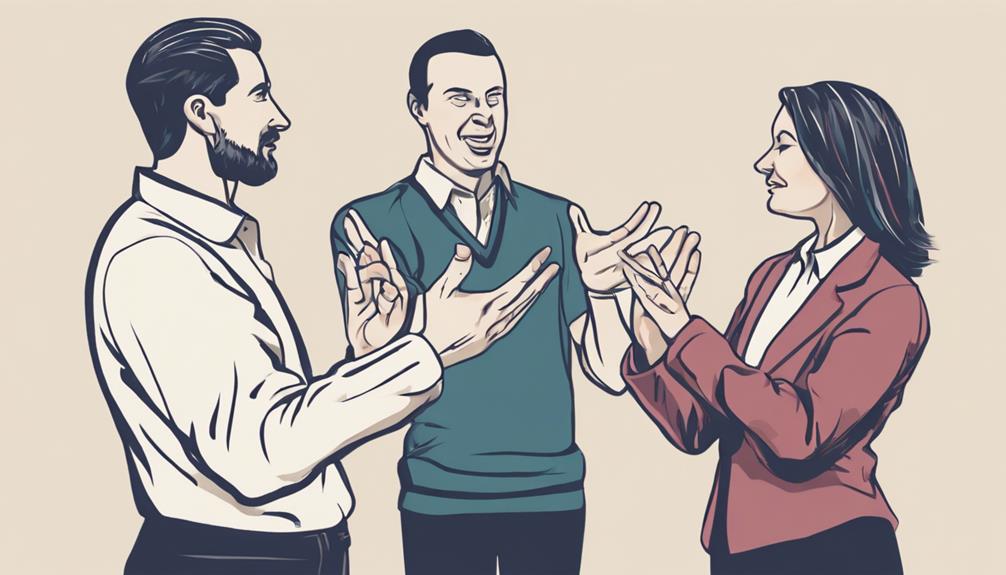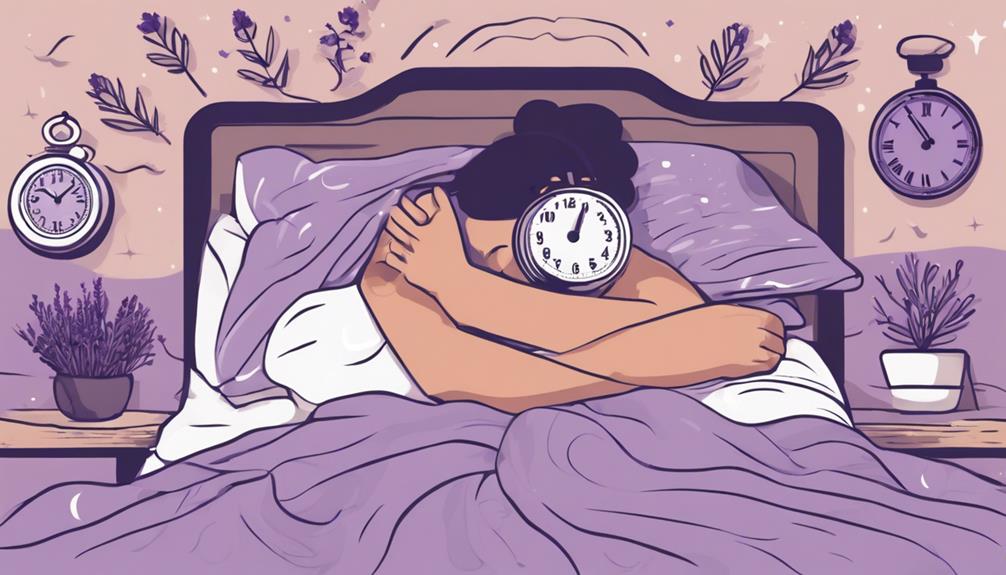web wind
self hypnosis

yoga
Hypnosis is a Pure tie-in to yoga to the fact It Will help you to achieve deeper levels of Comfort Throughout your yoga practice,

meditation
Meditation has been around for thousands of years, as has self-hypnosis, as a tool for deep relaxation, clearing the mind and achieving a state of inner peace.
Self Hypnosis for Self Healing
There are plenty of myths about hypnosis due to what we see on point, somebody eating an onion believing it is an apple, or blanking out and losing management.With self-hypnosis, you’re constantly. And you may use your brain to browse your own ideas and feelings and create results in your own life. Self Hypnosis provides you the resources to utilize engage your emotional power and energy up your daily life, health, success, and happiness.
one week free trial
HELLO! I’M BERIYA SATTA
about me
d.o.b
883 McDowell Street
Nashville, TN 37211
residence
883 McDowell Street
Nashville, TN 37211
specialities
Teaching Yoga and Hypnosis
Mindfulness to Young People
experience
HYPNOSIS INSTRUCTOR
883 McDowell Street
Nashville, TN 37211
MEDITATION GURU
883 McDowell Street
Nashville, TN 37211
YOGA INSTRUCTOR
883 McDowell Street
Nashville, TN 37211

JOIN US FOR A FREE 1-WEEK TRIAL
We are 100% sure that you will experience a better lifestyle with our courses.
happy customers

Merry Satta
Your Website is a valuable and comprehensive resource for Everybody but Particularly for Hypnotherapists, for Example, myself just starting out in this Excellent profession.

Jhone Smith
Fantastic support!!!! Thank you for the instantaneous (and informative!) help.

Beriya Satta
I wish to thank you for your warm welcome. I’m rather enthusiastic about this new find! I’m only about a year for a hypnotist and had been trying to branch out a little bit from weight reduction and smoking. This is an Excellent new start for me.
working hours
Monday – Friday8.00AM – 10.00PM
Saturday11.00AM – 10.00PM
SundayClosed
Latest Post
Applying Social-Cognitive Theories to Hypnosis Techniques
Applying social-cognitive theories to hypnosis techniques reveals the significant impact of self-efficacy, observational learning, social modeling, cognitive reappraisal, self-regulation, and vicarious experiences on hypnotic responses. Self-efficacy plays a vital role in the receptiveness to hypnotic suggestions, while observational learning through imitation enhances hypnotic outcomes. Social modeling techniques and cognitive reappraisal strategies shape hypnotic experiences, and self-regulation and vicarious experiences contribute to successful hypnotic states. These theories offer valuable insights into optimizing hypnosis techniques for better results.
The Role of Self-Efficacy

The concept of self-efficacy plays a crucial role in understanding the effectiveness of hypnosis techniques. Self-efficacy refers to an individual's belief in their ability to successfully perform a specific task or achieve a particular outcome.
In the context of hypnosis, individuals with higher levels of self-efficacy are more likely to respond positively to hypnotic suggestions and experience improved performance outcomes. Research has shown that confidence in one's abilities can enhance the receptiveness to hypnotic suggestions, leading to a deeper state of hypnosis and increased effectiveness of the intervention.
Individuals with low self-belief may be more resistant to the suggestions given during hypnosis, limiting the overall impact on their behavior or well-being.
Observational Learning in Hypnosis
Exploring how observational learning influences the efficacy of hypnosis techniques offers valuable insights into the mechanisms underlying hypnotic responsiveness. Observational learning in hypnosis involves the process of acquiring new behaviors or skills by witnessing and imitating others. This phenomenon is believed to be mediated by mirror neurons in the brain, which activate when an individual observes another person performing a specific behavior, leading to a neural representation of the observed action.
In the context of hypnosis, individuals may unconsciously imitate the behaviors and responses of the hypnotist during a session. This behavior imitation can contribute to the effectiveness of hypnotic suggestions, as the observer's brain mirrors the hypnotist's actions, creating a sense of rapport and receptivity to the suggestions being provided.
Social Modeling Techniques

Analyzing the impact of social modeling techniques on hypnotic responsiveness provides valuable insights into the role of social influence in shaping individuals' hypnotic experiences. Social modeling involves observing and imitating behaviors demonstrated by others, which can significantly influence hypnotic suggestibility.
Mirror neurons, a key component in observational learning, play a crucial role in this process by firing both when an individual performs an action and when they observe someone else performing the same action. This mechanism suggests that witnessing hypnotic behaviors during a social modeling session may activate mirror neurons in the observer, potentially enhancing their receptivity to hypnotic suggestions.
Furthermore, social reinforcement within a modeling context can strengthen the likelihood of individuals replicating hypnotic responses. When individuals witness positive outcomes or rewards following a modeled hypnotic behavior, they are more inclined to imitate those behaviors themselves.
This cycle of observation, imitation, and social reinforcement underscores the significance of social modeling techniques in shaping hypnotic experiences and outcomes.
Cognitive Reappraisal Strategies
Utilizing cognitive reappraisal strategies in the context of hypnosis involves employing mental reframing techniques to alter individuals' perceptions of hypnotic suggestions and experiences. By incorporating emotional regulation and cognitive restructuring, individuals can effectively manage their emotional responses and reinterpret their thoughts during hypnosis.
Emotional regulation plays a crucial role in cognitive reappraisal strategies within hypnosis. Through hypnosis, individuals can learn to regulate their emotions by altering their cognitive appraisals of specific situations or triggers. This process enables individuals to modify their emotional responses, leading to a more positive and adaptive experience during hypnosis sessions.
Moreover, cognitive restructuring involves changing the underlying cognitive processes that influence individuals' emotional reactions. By reframing negative thoughts or beliefs into more positive and constructive ones, individuals can enhance their emotional well-being and overall hypnotic experience. This restructuring of cognitive patterns fosters a healthier mental state and facilitates a more profound engagement with hypnotic suggestions.
Self-Regulation in Hypnotic States

Self-regulation within hypnotic states involves individuals actively managing their cognitive, emotional, and behavioral responses during the hypnotic experience. Emotional regulation plays a crucial role in maintaining a sense of calm and control during hypnosis. Techniques such as mindfulness, which enhance self-awareness and focus on the present moment, can aid in emotional regulation within hypnotic states.
By fostering self-awareness, individuals can better recognize and understand their emotional responses, allowing them to apply self-control strategies to modulate these emotions effectively.
Self-control strategies encompass various techniques aimed at regulating behavior and thoughts. These strategies can include cognitive restructuring, where individuals reframe their thoughts to promote positive emotions and behaviors during hypnosis. Additionally, individuals can utilize relaxation techniques to manage stress and anxiety, promoting a state of relaxation conducive to the hypnotic experience.
Vicarious Experiences in Hypnosis
Understanding vicarious experiences in hypnosis involves exploring how individuals can vividly imagine and internalize sensations, emotions, and actions observed in others during the hypnotic state. This phenomenon is closely linked to empathetic connection and hypnotic mirroring, where individuals in a hypnotic state may replicate the experiences of others as if they were their own.
Through this process, individuals can share experiences on a deep emotional level, fostering a sense of therapeutic empathy between the hypnotist and the subject. Empathetic connection in hypnosis allows individuals to tap into the subconscious mind, enabling them to mirror the thoughts and feelings of others.
This shared experience can enhance the therapeutic process by creating a profound sense of understanding and connection between the hypnotist and the subject. By internalizing the experiences of others, individuals in a hypnotic state can gain insights into their own emotions and behaviors, leading to potential healing and personal growth.
Frequently Asked Questions
Can Hypnosis Make Me Reveal My Deepest Secrets?
Hypnosis can influence suggestibility and memory recall, potentially leading individuals to reveal personal information. Ethical considerations arise regarding the invasion of privacy and the truthfulness of responses obtained. Psychological implications highlight the need for caution in utilizing hypnosis for uncovering deep secrets.
Is Hypnosis Effective for Overcoming Phobias?
Hypnosis has shown effectiveness in overcoming phobias by targeting the fear response through relaxation techniques and cognitive restructuring. By inducing a state of focused attention, hypnosis can promote anxiety reduction and help individuals confront and manage their phobias.
Can Hypnosis Help With Chronic Pain Management?
Hypnosis can be a valuable tool in chronic pain management by influencing pain perception and harnessing the mind-body connection. Research suggests that hypnosis can help individuals better cope with pain, offering a potential complementary approach to traditional pain management strategies.
Are There Risks Involved in Using Hypnosis?
When considering the use of hypnosis, ethical considerations, potential drawbacks, and safety concerns must be carefully evaluated. Psychological risks, such as false memories or increased suggestibility, highlight the importance of a cautious approach.
How Long Does It Take to See Results From Hypnosis?
The timing for observing results from hypnosis varies widely among individuals due to personalized timelines and unique responses. Immediate changes can occur for some, while others may experience long-term effects over extended periods.
Conclusion
In conclusion, the application of social-cognitive theories to hypnosis techniques offers valuable insights into how individuals can enhance their self-efficacy. It also helps them learn from observational experiences and utilize social modeling techniques. Engaging in cognitive reappraisal strategies, regulating behavior in hypnotic states, and benefiting from vicarious experiences are all crucial aspects that these theories can help enhance.
By understanding and implementing these theories, practitioners and individuals can optimize the effectiveness of hypnosis as a therapeutic tool.
Unlocking Advanced Deep Trance Hypnosis Techniques
Achieving mastery in advanced deep trance hypnosis involves harnessing the power of suggestion, rapid hypnotic inductions, deep breathing techniques, and visualization tools. By embedding post-hypnotic suggestions, one can initiate lasting subconscious reprogramming for transformative outcomes. Additionally, exploring advanced fractionation techniques can deepen hypnotic states for enhanced therapeutic results. Understanding and practicing these advanced techniques will unlock the full potential of hypnosis for personal growth and change. Explore these techniques further to uncover the depth and intricacies of advanced deep trance hypnosis.
Power of Suggestion Techniques

Utilizing the power of suggestion techniques in deep trance hypnosis can profoundly influence the subconscious mind, leading to transformative changes in thoughts, behaviors, and perceptions. Anchoring techniques play a crucial role in this process by associating specific stimuli with desired states or responses, creating a link that can be triggered later to evoke the intended reaction.
Through subconscious reprogramming, individuals can override limiting beliefs or habits, replacing them with more empowering narratives.
In addition to anchoring, persuasion tactics are employed to guide individuals towards embracing new perspectives or behaviors during deep trance hypnosis. By incorporating hypnotic language patterns, such as embedded commands or future pacing, hypnotists can subtly influence the subconscious mind, fostering receptivity to positive suggestions.
These linguistic techniques help bypass conscious resistance, allowing the hypnotist to communicate directly with the subconscious and facilitate profound changes at a deeper level of awareness.
Ultimately, by skillfully employing suggestion techniques and persuasion tactics, deep trance hypnosis can serve as a powerful tool for personal growth and transformation.
Rapid Hypnotic Inductions
Implementing rapid hypnotic inductions involves skillfully inducing a hypnotic state in a brief period, facilitating quick access to the subconscious mind for profound therapeutic work. Speed inductions are powerful tools that can quickly guide individuals into an instant trance, bypassing the critical factor of the conscious mind to establish a direct line of communication with the subconscious.
Utilizing hypnotic triggers such as a sudden hand drop or a specific word can rapidly induce a hypnotic state, enabling the hypnotist to work efficiently within a shorter timeframe.
Rapid hypnotic inductions are particularly beneficial when time is limited or when the individual is resistant to traditional induction methods. By swiftly accessing the subconscious mind, profound therapeutic results can be achieved in a shorter duration. This approach allows for deep exploration and positive suggestions to be implanted effectively, leading to transformative changes in behavior and thought patterns.
Mastering rapid hypnotic inductions can significantly enhance a hypnotist's ability to facilitate rapid change and help individuals overcome various challenges by accessing the subconscious mind efficiently.
Utilizing Deep Breathing Methods

To enhance the depth and effectiveness of hypnosis sessions, incorporating deep breathing methods can serve as a valuable technique in guiding individuals towards a relaxed and receptive state for therapeutic interventions.
Breath control plays a crucial role in hypnosis, as it helps regulate the autonomic nervous system, inducing a state of relaxation conducive to hypnotic suggestion. By focusing on deep, slow breaths, clients can shift their attention away from distractions and connect more deeply with their inner experiences.
Relaxation techniques involving deep breathing can be integrated into the induction phase of hypnosis, allowing individuals to let go of tension and anxiety. Encouraging clients to inhale deeply through the nose, hold the breath briefly, and exhale slowly through the mouth can promote a sense of calm and readiness for hypnotic processes.
Visualization and Imagery Tools
Incorporating visualization and imagery tools is a fundamental aspect of deep trance hypnosis techniques, enabling individuals to access and engage with their subconscious mind for profound therapeutic results. Creative visualization involves creating vivid mental images to manifest desired outcomes, while guided imagery utilizes detailed scripts to lead individuals through imaginary experiences that promote relaxation and healing.
Mental rehearsal is another powerful tool that allows individuals to mentally practice and prepare for real-life situations, enhancing performance and confidence. Through sensory perception, individuals can engage their senses in the visualization process, making the experience more immersive and impactful.
Embedding Post-Hypnotic Suggestions

When utilizing deep trance hypnosis techniques, practitioners can enhance the effectiveness of sessions by skillfully embedding post-hypnotic suggestions that guide individuals towards their therapeutic goals.
Embedding post-hypnotic suggestions involves planting specific instructions within the subconscious mind of the individual during a hypnotic trance. These suggestions are designed to initiate subconscious reprogramming, influencing behaviors, thoughts, and emotions even after the hypnosis session has ended.
To effectively embed post-hypnotic suggestions, practitioners utilize hypnotic language patterns that communicate directly with the subconscious mind. These language patterns are carefully crafted to bypass the critical faculty of the conscious mind and speak directly to the part of the mind that controls automatic behaviors and beliefs.
By using precise wording, repetition, and strategic delivery, practitioners can ensure that the post-hypnotic suggestions are deeply ingrained in the individual's subconscious, leading to lasting positive changes in behavior and mindset.
Mastering the art of embedding post-hypnotic suggestions is a powerful tool for facilitating personal growth and achieving therapeutic outcomes.
Advanced Fractionation Techniques
Utilizing advanced fractionation techniques in hypnosis sessions allows practitioners to deepen the trance state by alternating between hypnotic induction and bringing the individual out of hypnosis multiple times within a single session. Fractionation benefits include the ability to enhance suggestibility, promote relaxation, and access deeper levels of the subconscious mind.
By repeatedly inducing and emerging from hypnosis, clients can experience a heightened state of focus and receptivity, making them more responsive to therapeutic suggestions.
However, it is essential to be mindful of potential drawbacks such as the risk of overstimulation or disorientation in some individuals. Practitioners should adapt the intensity and frequency of fractionation based on the client's responsiveness and comfort level to ensure a safe and effective hypnosis experience.
Variations of fractionation techniques include rapid, slow, and mixed induction patterns, allowing for customization based on the client's needs and preferences.
Applications of fractionation extend beyond traditional therapy sessions and can be utilized in areas such as enhancing performance, managing stress, and improving overall well-being.
Frequently Asked Questions
Can Hypnosis Be Used to Enhance Athletic Performance?
Hypnosis can effectively enhance athletic performance by improving mental focus, boosting physical endurance, and utilizing visualization techniques. Through tailored sessions, individuals can experience heightened concentration, reduced anxiety, and overall performance enhancement in sports.
How Long Does It Take to Master Deep Trance Techniques?
Mastering deep trance techniques varies based on individual dedication and skill level. Consistent practice, guided by experienced professionals, is key. Benefits include heightened focus, improved relaxation, and enhanced ability to induce profound hypnotic states for therapeutic or performance enhancement purposes.
Can Deep Trance Hypnosis Help With Anxiety Disorders?
Deep trance hypnosis can significantly aid in managing anxiety disorders by promoting mental health and stress relief. Through targeted techniques, individuals may experience reduced symptoms and enhanced coping mechanisms, leading to a better quality of life.
Is It Possible to Self-Induce Deep Trance States?
Self-inducing deep trance states through self-hypnosis techniques is possible and can offer numerous benefits like relaxation and self-improvement. Beginners can start with guided scripts, dispelling common misconceptions through education and practice for optimal results.
Can Deep Trance Hypnosis Be Used for Pain Management?
Deep trance hypnosis can be a powerful tool for pain relief, utilizing healing visualizations to manage discomfort. By inducing a deep state of relaxation, the mind can positively influence perception of pain, offering a holistic approach to managing discomfort.
Conclusion
In conclusion, the advanced deep trance hypnosis techniques discussed in this article have the potential to enhance the effectiveness of hypnosis sessions. By tapping into the power of suggestion, utilizing rapid hypnotic inductions, deep breathing methods, visualization and imagery tools, embedding post-hypnotic suggestions, and employing advanced fractionation techniques.
By mastering these techniques, hypnotists can deepen their clients' hypnotic experiences and achieve more profound results in their practice.
7 Proven Clinical Trials of Hypnosis for Insomnia
Clinical trials have shown the effectiveness of hypnosis in treating insomnia compared to traditional CBT-I. Hypnotherapy is proven to be as effective as medication in improving sleep outcomes, targeting underlying factors contributing to insomnia. The non-invasive approach of hypnosis induces deep relaxation, alleviates sleep disturbances, and enhances sleep efficiency. With personalized scripts, hypnosis helps manage chronic insomnia symptoms and improve overall sleep quality. Research suggests that hypnosis addresses psychological factors, promotes relaxation, and influences cognitive function positively. These findings highlight hypnosis as a potential sustainable solution for managing chronic insomnia.
Study on Hypnosis Vs. CBT-I

Comparing the efficacy of hypnosis versus Cognitive Behavioral Therapy for Insomnia (CBT-I) in clinical trials has been a topic of interest among researchers studying treatment options for sleep disorders. Cognitive Behavioral Therapy has long been considered the gold standard for treating insomnia due to its effectiveness in addressing the underlying causes of sleep disturbances. Studies have shown that CBT-I not only improves sleep in the short term but also leads to sustained improvements in sleep quality over the long term.
On the other hand, hypnotherapy has also shown promising results in the treatment of insomnia, with some studies suggesting that it can be as effective as medication in improving sleep outcomes.
However, further research is needed to fully understand the comparative effectiveness of hypnosis versus CBT-I in the long term. Additionally, exploring how hypnotherapy compares to medication in terms of long-term outcomes could provide valuable insights into the most effective treatment options for individuals with chronic insomnia.
Hypnosis for Sleep Quality Improvement
Hypnosis has demonstrated potential as a method for improving sleep quality in individuals with insomnia. This alternative therapy aims to induce a state of deep relaxation, which can help alleviate the symptoms of sleep disturbances. By incorporating relaxation techniques during hypnosis sessions, individuals may experience improved sleep patterns and a more restful night's rest. Moreover, mindfulness practices integrated into hypnotherapy sessions can promote a sense of calmness and mental clarity, contributing to better sleep quality.
Establishing a consistent bedtime routine that includes hypnosis sessions can further enhance the effectiveness of this approach. Engaging in hypnosis before bed can help individuals unwind, release tension, and prepare both the mind and body for sleep. The incorporation of deep sleep suggestions during hypnosis can encourage a more profound and rejuvenating rest, addressing the root causes of poor sleep quality in individuals with insomnia.
Effects of Hypnosis on Insomnia Severity

The impact of hypnosis on insomnia severity has garnered attention in clinical research, shedding light on its potential role in alleviating the symptoms associated with this sleep disorder. Studies have shown that hypnosis benefits individuals suffering from insomnia by targeting the underlying factors contributing to the condition, such as stress, anxiety, and racing thoughts that often disrupt sleep patterns.
By inducing a state of deep relaxation and heightened focus, hypnosis can help individuals experiencing insomnia to achieve a calmer mind and body, leading to improved sleep quality and duration.
As a non-invasive and drug-free approach, hypnosis offers a promising alternative in the realm of insomnia treatment. Research has indicated that incorporating hypnosis into a comprehensive treatment plan for insomnia can result in reduced severity of symptoms, enhanced sleep efficiency, and an overall improvement in sleep architecture.
Hypnotherapy for Chronic Insomnia
What are the key considerations when exploring the effectiveness of hypnotherapy for chronic insomnia?
Chronic insomnia is a persistent condition that can significantly impact an individual's quality of life. When evaluating hypnotherapy as a treatment option, it is essential to consider the incorporation of self-hypnosis techniques. Self-hypnosis empowers individuals to practice relaxation and mindfulness, potentially aiding in the management of insomnia symptoms over time. By learning how to induce a hypnotic state on their own, individuals with chronic insomnia may experience improved sleep patterns and a reduction in sleep disturbances.
Furthermore, understanding the specific insomnia triggers of each individual is crucial in tailoring hypnotherapy sessions effectively. Identifying triggers such as stress, anxiety, or poor sleep habits can guide the hypnotherapist in creating personalized scripts and suggestions to address these underlying issues during sessions. By targeting these triggers, hypnotherapy can help individuals with chronic insomnia achieve a deeper state of relaxation and promote better sleep quality.
Hypnosis and Sleep Efficiency

Studies have shown a potential correlation between hypnosis and improved sleep efficiency in individuals with insomnia. Hypnosis benefits for sleep patterns have been investigated in various studies, indicating promising results.
Sleep efficiency refers to the amount of time spent asleep compared to the total time spent in bed, providing insights into sleep quality. Research suggests that hypnosis can enhance sleep efficiency by addressing underlying psychological factors contributing to insomnia. By promoting relaxation, reducing anxiety, and altering negative thought patterns, hypnosis may help individuals fall asleep faster and stay asleep longer.
Improved sleep efficiency can lead to a more restorative sleep experience, contributing to overall well-being and cognitive function. Furthermore, hypnosis has been shown to positively influence sleep patterns by regulating sleep stages and enhancing the continuity of sleep. This suggests that incorporating hypnosis into insomnia treatment plans may offer a non-pharmacological approach to improving sleep efficiency and quality for individuals struggling with sleep disturbances.
Hypnotic Interventions for Insomnia Relief
Various hypnotic interventions have been explored as potential non-pharmacological approaches for alleviating symptoms of insomnia. Hypnosis effectiveness in treating insomnia has been studied in clinical trials, showing promising results.
Hypnotic interventions focus on utilizing relaxation techniques, imagery, and suggestion to help individuals achieve a state of heightened suggestibility and focus, which can positively impact sleep patterns. These interventions aim to address underlying psychological factors contributing to insomnia, such as stress, anxiety, and racing thoughts that can disrupt sleep.
In the realm of insomnia treatment, hypnotic interventions have shown potential in improving sleep quality, reducing the time it takes to fall asleep, and enhancing overall sleep efficiency. By targeting the root causes of insomnia through hypnotic techniques, individuals may experience a reduction in sleep disturbances and an improvement in their overall sleep experience.
As research in this area continues to evolve, hypnotic interventions hold promise as a non-pharmacological approach for addressing insomnia and promoting better sleep health.
Hypnosis for Sleep Onset Latency

Hypnosis has demonstrated potential in reducing sleep onset latency in individuals experiencing insomnia. In the context of sleep onset latency, which refers to the time it takes for an individual to transition from full wakefulness to sleep, hypnosis techniques have shown promise in addressing this specific aspect of insomnia.
Clinical trials have explored the efficacy of hypnosis in improving sleep onset latency, often in conjunction with other strategies such as sleep hygiene, cognitive restructuring, and relaxation training.
Hypnosis techniques utilized in these trials typically involve guiding individuals into a state of deep relaxation, where suggestions aimed at promoting quicker sleep onset are provided. These suggestions may target reducing racing thoughts, calming the mind, and enhancing overall sleep readiness.
Moreover, incorporating cognitive restructuring techniques can help individuals challenge and reframe negative thoughts or beliefs contributing to sleep onset difficulties. By combining hypnosis with relaxation training, individuals may experience improved sleep quality and reduced time spent lying awake before falling asleep.
Further research is warranted to explore the long-term effectiveness and applicability of hypnosis for addressing sleep onset latency in individuals with insomnia.
Frequently Asked Questions
Can Hypnosis Be Used as a Standalone Treatment for Insomnia?
Hypnosis as a standalone treatment for insomnia is a topic of interest within alternative therapies. Its potential effectiveness may be linked to the mind-body connection and relaxation techniques, sometimes complementing traditional sleep hygiene practices.
Are There Any Potential Side Effects of Hypnosis for Insomnia?
When considering hypnosis for insomnia, safety concerns should be addressed. While generally safe, potential adverse reactions may include temporary drowsiness, headache, or vivid dreams. It is important to seek a qualified practitioner for guidance.
How Long Does It Typically Take to See Results With Hypnotherapy?
The timeline to observe results with hypnotherapy can vary among individuals. Factors such as the severity of insomnia, patient expectations, and the specific treatment plan influence clinical effectiveness. Long-term benefits may require maintenance therapy.
Can Hypnosis for Insomnia Be Effective for All Age Groups?
Hypnosis for insomnia has shown promise across age groups, with varying levels of effectiveness. Pediatric effectiveness may differ from elderly response due to age-related factors influencing hypnosis success. Understanding age differences is crucial for tailored treatment.
Is Hypnosis for Insomnia Covered by Insurance?
Insurance coverage for hypnosis for insomnia varies. While effectiveness has been reported, not all insurance plans cover this therapy. It is recommended to consult with your insurance provider to determine if hypnosis for insomnia is a covered benefit.
Conclusion
In conclusion, the seven clinical trials discussed provide evidence of the effectiveness of hypnosis in treating insomnia.
The studies demonstrate that hypnosis can be a valuable alternative or adjunct to traditional treatments such as CBT-I for improving sleep quality, reducing insomnia severity, and increasing sleep efficiency.
Further research and exploration of hypnosis as a therapeutic option for insomnia are warranted based on the positive outcomes observed in these trials.
take any class at your free time
flexibly for whole month
address
883 McDowell Street, Nashville, TN 37211.
info@webwind.net
contact
1-931-320-8895



